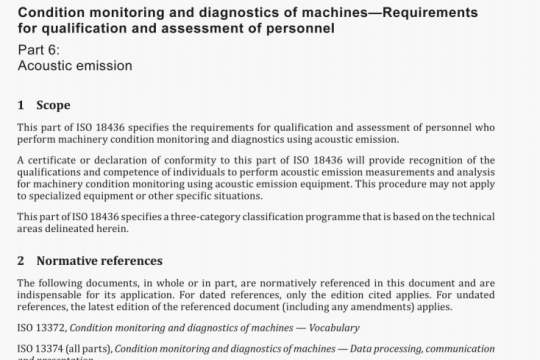ISO 10751:2016 pdf free
ISO 10751:2016 pdf free.Footwear一Test methods for slide fasteners一Resistance to repeated opening and closing
The test may be conducted with any number of test specimens, but a minimum of three is recommended. Condition the test specimens according to ISO 18454 for 24 h before testing and carry out the test in this environment.
If the test fastener is shorter than the minimum distance between the two clamps (5.1.1), and (5.1.2) then sew strips of either leather or fabric, minimum width 25 mm, to the closed ends of both tapes. The exact length of the strips will depend on the clamping system of the machine being used, but they should enable the fastener to be clamped in a position such that its slider does not make contact with the end stops during the test.
Mark a line across the width of each tape of the test fastener which is (4±2) mm on the outer side of the end stops at the open end.
Mark a second line across the width of each tape, or attached strip (5.2), which is[D]±1 mm from,and parallel to the line [6.3]. If this second line passes close to an end stop which is sufficiently thick to make clamping difficult, then move the line towards the centre of the fastener until it is over the teeth and clear of the end stop. Then, move the line (6.3) untilit is [D]±1 mm from this second line.cut two tabs of leather or fabric, minimum width 25 mm. The exact length of the strips will depend on the clamping system of the machine being used, and b) sew a tab (6.6.1) to the reverse edge of each tape so that the longitudinal centre line of the tab is at 90° to the edge of the teeth and is coincident with the point made in 6.5. Use two rows of stitching which are parallel to the edge of the test fastener teeth with one row (7,0±0,5) mm and the other (9,0±0,5) mm from the teeth. Both rows of stitching should be continued for at least 25 mm beyond either end of the tab.ISO 10751 pdf free download.




